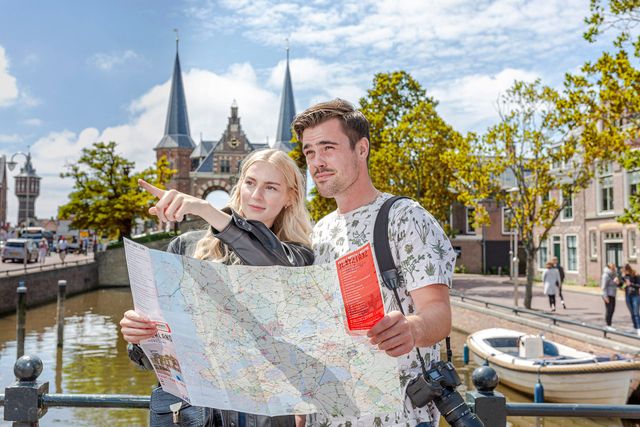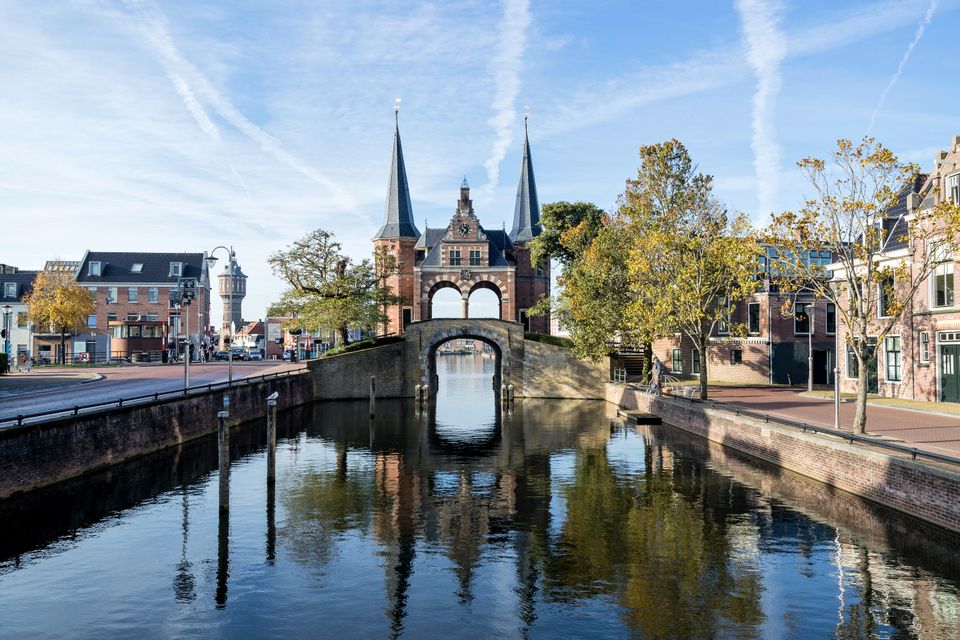Waterpoort Sneek, more than a stunning building
Graceful, not to be missed, and yet modest. The Waterpoort (water gate) of Sneek is a fascinating building and a national monument. The people of Sneek are proud of their Waterpoort and like to show the silhouette on their sweaters or cars. Anyone who has ever sailed or walked through the Waterpoort understands why. It’s a magical thing. The Sneeker Waterpoort stands on the edge of the old city centre and was built at the same time as the city wall, around 1492. But the gate got its present character later, in 1613.
What was the Waterpoort for?
Water gates were built as part of a town rampart or wall. Just like land gates. They could be closed in case of imminent danger, but they were mainly used to seal off the city at night. In 1825, the Waterpoort of Sneek was closed for the last time. If you were late, you had to pay. To spare the inhabitants of Sneek this fine, the clock was once advanced five minutes, so that people, in reality, would not arrive too late so quickly. Since then, the clock of the Waterpoort has never been turned back.
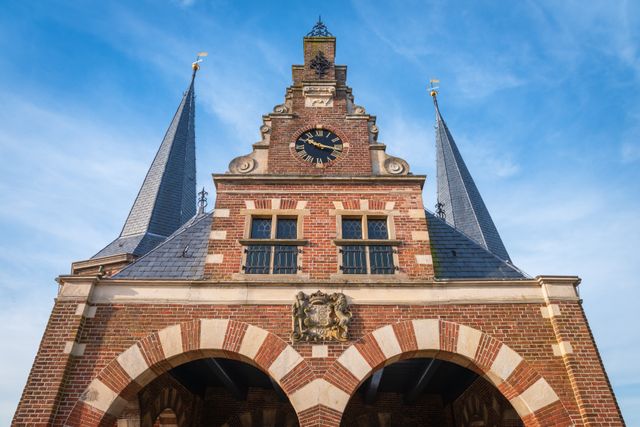
Famous from Sneek to China
Of course, Sneek is more than just the Waterpoort. The town canal, picturesque streets, stately buildings, cosy squares, the Sneekweek, its own dialect; Sneek has everything a real city has. And therefore, also an iconic symbol: the Waterpoort. Perhaps not as famous as the Eiffel Tower, but still known far beyond the national borders. It is featured on clothes from the sports brand Gaastra, originally from Sneek. The building is also known in China, for example, where three replicas decorate a leisure park. Or in Japan, where you will find the Waterpoort in an amusement park. For a smaller size, visit Legoland in Denmark or Madurodam in The Hague.

Renovations Sneeker Waterpoort
The Waterpoort of Sneek has been renovated three times. The first renovation, in 1613, was immediately a true metamorphosis; the water gate then no longer had a military function and was turned into an ornamental gate. This was more or less the gate as we know it today, with two stately, octagonal towers. The architect is unknown to this day. In the 18th century, two more renovations followed and a guard’s house was added, which you can recognize especially well on the side and back. A thorough restoration in 1877, led by the well-known architect Isaac Gosschalk, ultimately determined the current, magnificent character of the pride of Sneek.
Almost demolished
Sneek once had six gates: four water gates and two land gates. The land gates were demolished. And when – too large – steamboats had to pass, the water gates were next. Three were torn down, but the people of Sneek personally stopped the demolition of the last one. The Waterpoort was preserved and the extraordinary building evolved into the symbol of Snits (the Frisian name for Sneek).
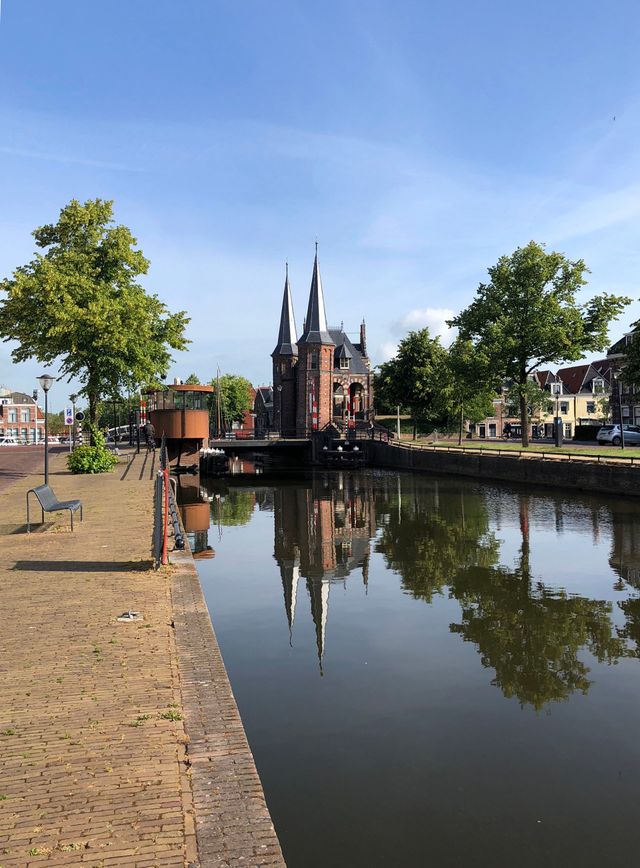
The Waterpoort and the Elfstedentocht
Have you ever skated or sailed the Elfstedentocht or seen it on television? Then the Waterpoort can’t have escaped your notice. This famous skating race and tour passes right in front of it and follows the water Kolk. By the way, when the next Elfstedentocht takes place, the route through the centre of Sneek will then – because of the crowds – be split into a western and eastern route for the first time. The thousands of skaters then reassemble in front of the Waterpoort. This is bound to be a beautiful sight.

-
More about Sneek
More about Sneek
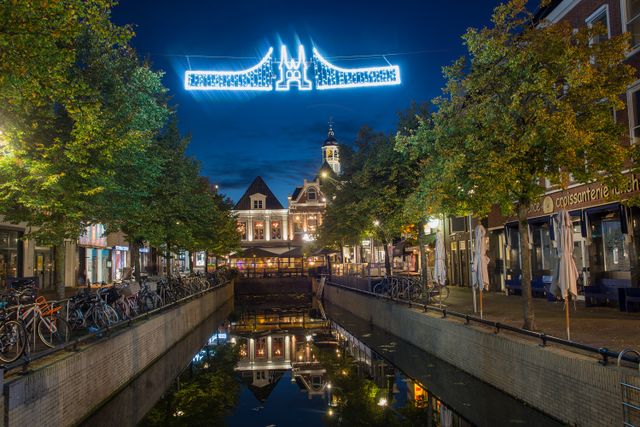
-
Discover treasures in Sneek
Discover treasures in Sneek
